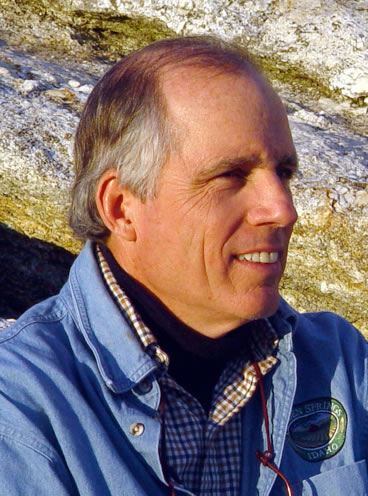 Information about
Information about
 Information about
Information about
Randall Arendt is a landscape planner, site designer, author, lecturer, and an advocate of "conservation planning".
He received his B.A. degree from Wesleyan University (magna cum laude and Phi Beta Kappa) and his M.Phil. degree in Urban Design and Regional Planning from the University of Edinburgh, Scotland, where he was a St. Andrew's Scholar. He is Senior Conservation Advisor at the Natural Lands Trust in Media, Pennsylvania, and is the former Director of Planning and Research at the Center for Rural Massachusetts, University of Massachusetts at Amherst, where he also served as an Adjunct Professor. In 2003 he was elected a Fellow of the Royal Town Planning Institute in London. In 2004 he was named an Honorary Member of the American Society of Landscape Architects, and in 2005 he received the American Institute of Architects' Award for Collaborative Achievement. In 2008 he received an honorary degree in Landscape Planning and Design by the Conway School of Landscape Design, in Conway, Massachusetts.
Mr. Arendt is the author of more than 20 publications. After coauthoring the award-winning Dealing with Change in the Connecticut River Valley: A Design Manual for Conservation and Development, he produced a 450-page sequel entitled Rural by Design: Maintaining Small Town Character, in 1994, which is listed among 39 volumes recommended by the American Planning Association for "the essential planning library". His third major work Conservation Design for Subdivisions: A Practical Guide to Creating Open Space Networks (1996) was followed by a companion volume three years later, Growing Greener: Putting Conservation into Local Plans and Ordinances. Also in 1999 his fifth book, Crossroads, Hamlet, Village, Town: Design Characteristics of Traditional Neighborhoods, Old and New. This was followed in 2010 by Envisioning Better Communities: Seeing More Options, Making Wiser Choices, published jointly by the APA and the Urban Land Institute. A totally updated second edition of Rural by Design (now subtitled Planning for Town and Country) appeared in 2015,featuring many new case studies and chapters on more current topics.
For further details about these publications, please see the Products part of this website.
Mr. Arendt is the country's most sought-after speaker on the topic of creative development design as a conservation tool. He has presented slide lectures in 47 states and five Canadian provinces. In recent years he has been featured as a key speaker at national conferences sponsored by the American Planning Association, the Urban Land Institute, the American Farmland Trust, the American Society of Landscape Architects, the National Association of Home Builders, the Land Trust Alliance, the US EPA, and the Canadian institute of Planners. His work has been featured in leading periodicals including the New York Times, the Christian Science Monitor, the Wall Street Journal, Landscape Architect, Urban Land, the Amicus Journal, the Smithsonian, and the New Yorker.
Mr. Arendt has designed "conservation subdivisions" for a wide variety of clients in 21 states and several Canadian provinces. His designs are "twice green" because they succeed both environmentally and economically. Achieved in a “density-neutral” manner, they respect landowner equity and allow developers to build at the legal density, but require significant conservation through more compact layouts. Hamburg Township, Livingston County, Michigan, which has implemented conservation design over the past decade, has protected nearly 2,000 acres with this approach, representing a land value of at least $40 million. Hanover County VA has preserved more than 5000 acres using these ordinances during a similar period. In Calvert County, Maryland, the total is nearly 7,800 acres, and in San Luis Obispo County, California it is over 9,000.
Added Value: In Pleasant View, Tennessee, his re-design saved one developer approximately $212,000 in street construction costs, while at the same time introducing significantly more quality open space into the layout. By respecting natural terrain and designing around existing site features on an 80‐lot development in Nacogdoches, Texas, he recently cut grading costs by 83%, or one quarter-million dollars (from $300,000 to $50,000). Another design is credited by a Carmel Indiana developer as having added $20,000 to $25,000 of value to each of his 40 lots (an added value of $800,000 to $1m), while still providing for full development density.
 Further Information about
Further Information about
I grew up in a traditional 1920’s neighborhood in Cranford NJ within walking distance of the elementary school, public library, shops, church, and commuter railway station. However, the nearest park was several miles away, along a river floodplain, too far for a child to walk. Looking back, I realize this was a community with zoning but rather little planning. At age nine my family moved to a very different community, one with a great deal of planning but no zoning (at the time). It was full of planned open space, walking trails, a skating pond, and a lake for swimming and sailing (protected by a perimeter greenbelt except for the community beach and boat launching area). However, it was totally automobile-dependent, a large planned residential community of single-family homes.
This was a complete childhood, with two complementary halves. However, it was a pity that they were so separate, that neither community was complete in itself. That is the challenge that remains today: how to create truly complete communities.
My first revelation that this could be accomplished occurred when I began post-graduate studies in Edinburgh, where I discovered extensive parkland both within and at the very edge of this extremely walkable, vibrant, and enchanting city. But the same healthy mix and enjoyable balance was also to be found in many of the small towns and burghs of lowland Scotland. And, as I came to discover, this was also the norm throughout the country. As I travelled further, onto the Continent, the same pattern revealed itself. It was almost like finding a parallel universe. Here were compact communities, where different land-uses comfortably comingled with each other on the same street. Public parks and squares were relatively numerous and far better maintained than was the usual case back home. Sprawl was essentially non-existent, and the distinction between town and country clearly defined. Above all, there was noticeably greater attention to detail in many aspects of design within the public realm, from shop signage to the paving of streets and sidewalks.
Following a year of study at Edinburgh University (in a course on Planning and Housing in Developing Countries), I entered the Peace Corps with my new bride. After serving for a year in rural Panama we were transferred to Kingston, Jamaica where I took an entry-level position at the Urban Development Corporation. One of my projects involved working with an English expatriate landscape architect named David Wassell, who taught me how to use large-scale photographs to identify—and to design around—the locations of significant trees and other native vegetation on the beach at Negril. This experience greatly influenced the way I began to look at the existing landscape of potential development sites.
Returning to Edinburgh following 27 months in the Peace Corps, I joined the M.Phil course in Urban Design and Regional Planning, where I learned about the British approach to land-use planning, and where my studio project involved leading a team of fellow students developing a plan to rehabilitate the City’s poor Southside district, located just off-campus. With its emphasis on restoring the historic building fabric and retaining the old street patterns, it offered an alternative vision for the area, which had been proposed for “comprehensive redevelopment “ (aka urban renewal) by a consulting team led by my professor, Percy Johnson-Marshall. (Ultimately the City adopted a plan not much different from the one we students had prepared, which had also garnered considerable publicity in the local press.)
After receiving my graduate degree, we moved south to Norfolk, where I became Senior Planning Assistant at the Norfolk County Planning Department in 1976. While there I completed the North Walsham Study, which identified the costs and benefits of three alternative “settlement strategies” for a representative part of Norfolk’s large rural area. This study demonstrated that the planning approach involving lowest economic, environmental, and social costs was the one directing new development to the market town and the largest villages—as opposed to allowing each small village to expand (even when that development was confined to tightly-drawn “village envelopes” enclosing their built-up areas). Those results later informed the planning strategy for the entire county, and were embodied in the extensive “Report of Survey” and the Norfolk Structure Plan’s Rural Area chapter (which I largely wrote).
Returning to the United States after two years in rural Norfolk, I worked for eight years at a regional planning commission in southern Maine where my job was primarily to assist planning boards in three small towns (York, Kennebunk, and Arundel), reviewing subdivision proposals at their fortnightly meetings, drafting ordinance revisions, and updating comprehensive plans. At this stage of my career I learned the importance of walking the land with board members and offering constructive ideas to the designers of these developments. And I realized what a wide chasm separated the lofty ideals of their official plans from their mundane ordinances. Partly to help create the open space preserves I had seen everywhere in Britain, one of the new ordinances I created required developers to set aside half of their buildable land as permanent open space (while maintaining full density on smaller lots). Toward the end of those years I designed my first conservation subdivision, in the town of South Berwick, bridging the gap between an applicant with a thoroughly conventional layout and a planning board that wanted to preserve much of the park-like property proposed to be subdivided.
With agency funding (and staffing) continuing to shrink, I left Maine in 1984 to accept an appointment as the first administrator of the Downtown Historic District in Lowell, MA. Working with historic architects from the National Park Service, I chaired the Design Review Committee, and assisted shopkeepers on tight budgets with designs for simple storefront improvement projects and signage.
At a historic preservation conference in Amherst I was essentially recruited to direct the state University’s new planning and applied research center, whose mission was to help small towns in rural Massachusetts conserve land and natural resources. While there I worked closely with landscape architect Harry Dodson, coauthoring a design manual on conservation and development (Dealing with Change in the Connecticut River Valley). This experience enabled me to hone my skills in site design and community presentations.
Five years later I moved into the nonprofit part of the private sector, working with the Natural Lands Trust outside Philadelphia, helping to implement a program in “community land stewardship” which involved writing reports, publications, and model ordinance provisions called Conservation by Design: Growing Greener. Distilling much of my work during the previous two decades, I packaged the essence into a format that can be easily understood and implemented by members of local planning commissions.
Returning to New England after nearly a decade in the mid-Atlantic, I established a one-person consulting firm specializing in educational workshops, reviewing ordinances, and designing new neighborhoods following the principles of conservation design in rural areas, and also incorporating “the greener aspects of the New Urbanism” to those neighborhood layouts in serviced locations.
 Read an article about Randall Arendt from Planning Magazine (UK).
Read an article about Randall Arendt from Planning Magazine (UK).